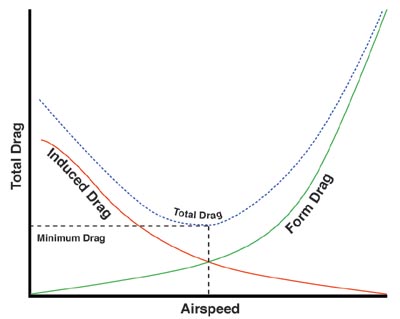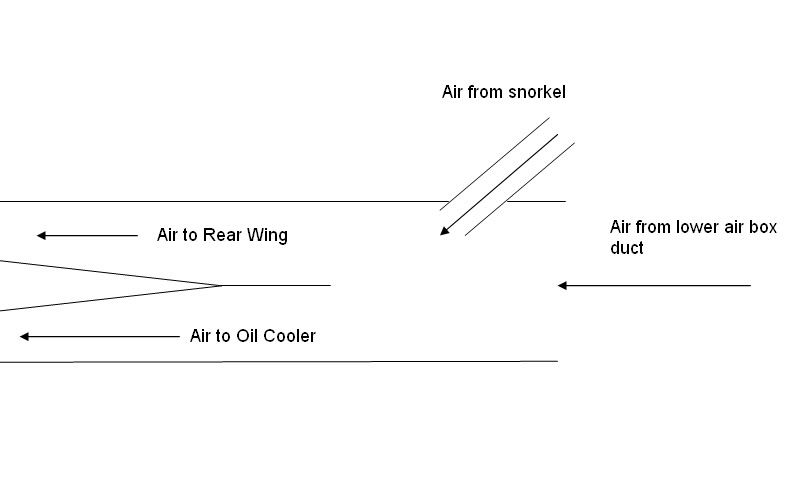hollus wrote:From a very philisophical and not so mathematical point of view, I'll consider a rear wing a single element flat panel at an angle of 45 degrees to the floor. By its mere being in the flow, high pressure will accumulate in front of it and low pressure behind. This pushes perpendicularly to the wing, thus the car is pushed partially downwards and partially backwards. I'll call these pressure forces. Now, the wing, if the airflow is attached, will receive air flowing horizontally at 250Km/h and produce air flowing at 45 degrees to the floor, presumably at close to 250Kmh along the wing plane. This air has thus now moving forwards at the square root of 2 less than the initial horizontal speed, or about 175Km/h. It has lost 75Km/h of horizontal speed (relative to the car, relative to the ground it has gone from stationary to 75Km/h moving forwards) and must thus be pushing the car backwards. This air is also now moving at 175Km/h vertically and thus it must push the car downwards. I'll call these flow forces. Do not dismiss flow forces, a F1 car travelling at 300Km finds in the order of 100Kg of air in its way every second, and we all know that it mostly pushes it all upwards.
Thus, looking at pressure forces, if you get more downforce on the car, you have to pay as more drag on the car. Looking at flow forces, if you get more downforce in the car you also must pay as more drag in the car. The relative magnitudes can vary of course and my very crude plank wing does not even try to capture it.
As I see it, if the wing would go from nice attached flow to a stall, be this total or partial, the pressure forces would likely increase (more downforce and drag on the car), while the flow forces would for the most part, dissapear, (less downforce and less drag on the car). Flow forces probably have a better downforce to drag ratio than pressure forces, but in the straight they are not so needed. The car would not lose all downforce, as it would not lose all drag. In stall, it gains more of both, downforce and drag from prossure forces, and loses both downforce and drag from flow forces. It is all a quastion of the relative magnitudes.
I think what you're getting at is the relationship between
induced and form drag. This seems to be the general consensus as to where an answer to the conundrum might lie.
In the diagram from that page, you can see how the two interact with an airplane wing...

In this example, the induced drag falls as the wing is leveled off with speed. Of course, in F1, the wing is fixed, so induced drag not only begins at a much higher level (due to the higher angle of attack), but also rises instead of falls with speed. So it's easy to contemplate that in a stall, the loss in induced drag might well more than make up for the additional form drag that might be incurred. Add that to the idea that an F1 wing is far more draggy than an airplane wing, even in an unstalled state, and it becomes even more intriguing since the difference in drag between a stalled and unstalled state will be less than in aviation.
Like you say, we just need the flow diagrams to prove it.






